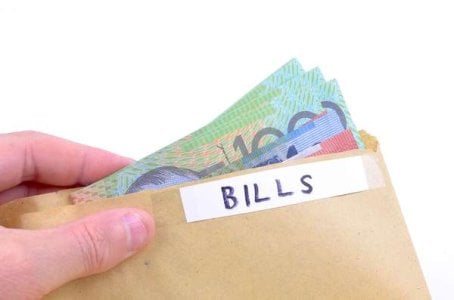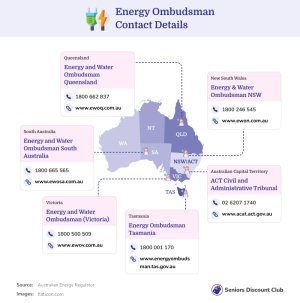Here’s what you should do if your gas meter reading is wrong
Getting an unexpectedly high gas bill can be incredibly frustrating and confusing.
But you may have recourse if your meter reading happens to be inaccurate or estimated without your knowledge.
Enter the story of Chris, a disgruntled New South Wales resident who was puzzled over the huge amount on his quarterly gas bill.
After receiving a staggering $1,271 bill, Chris double-checked his own meter reading. It was at that point he discovered the actual amount owed was only $744—a huge difference of over $500!
Chris alleged that his energy retailer ‘guestimated’ the reading rather than getting an actual read from the meter.
Unfortunately, experiences like Chris' are not uncommon—the New South Wales Energy and Water Ombudsman received over 1,000 complaints last year about inaccurate meter readings.
So what can you do if you suspect your gas meter reading is wrong? The NSW Ombudsman has some expert advice.
Janine Young, the New South Wales Energy and Water Ombudsman, explained that if a meter reading is estimated rather than actual, the retailer must clearly indicate this on the bill.
‘If they are estimating, they need to make it clear on the bill that bill is estimated,’ Ms Young said. ‘The customer can take a self-read and let their retailer know to get the bill adjusted.’
She added that estimated bills should have an 'E' and an asterisk next to the total amount owed. It should also have an explanation about the estimation, which can be found on the second or third page of the bill.
‘Some customers don't pick that some customers pay the amount that's there, and then find later that they either get a catch-up bill if it was an underestimate or that they've paid over the ante if it's an overestimate,’ Ms Young explained.
Estimating readings is sometimes necessary when the meter reader cannot be accessed on the property. But estimations should be based on your previous usage in that quarter or the average for similar households in your area.
Young recommended that customers who receive an estimated reading take their own meter read and provide it to their retailer to have the bill adjusted.
‘[Energy retailers] do need to be reading meters at least once per year but generally every quarter, and if they're not, then a customer should be lodging a complaint with their retailer,’ she advised.
She continued: ‘And if that doesn't get fixed, come to my office.’
Being proactive about your meter and usage data can help minimise billing surprises. But if you do suspect an error, be persistent in contacting your retailer and escalating it to the ombudsman if needed.
With some diligence, you can avoid paying for gas you didn't actually use!
If you’re unsure how to read your own gas meter, you can read the guide from Energy Australia here.
You can also learn more about reading your gas bill here.
If you would like to file a complaint with your Energy Ombudsman, here are the contact details for each state/territory:

Have you experienced this in your gas bill, members? Share your experience in the comments below!
But you may have recourse if your meter reading happens to be inaccurate or estimated without your knowledge.
Enter the story of Chris, a disgruntled New South Wales resident who was puzzled over the huge amount on his quarterly gas bill.
After receiving a staggering $1,271 bill, Chris double-checked his own meter reading. It was at that point he discovered the actual amount owed was only $744—a huge difference of over $500!
Chris alleged that his energy retailer ‘guestimated’ the reading rather than getting an actual read from the meter.
Unfortunately, experiences like Chris' are not uncommon—the New South Wales Energy and Water Ombudsman received over 1,000 complaints last year about inaccurate meter readings.
So what can you do if you suspect your gas meter reading is wrong? The NSW Ombudsman has some expert advice.
Janine Young, the New South Wales Energy and Water Ombudsman, explained that if a meter reading is estimated rather than actual, the retailer must clearly indicate this on the bill.
‘If they are estimating, they need to make it clear on the bill that bill is estimated,’ Ms Young said. ‘The customer can take a self-read and let their retailer know to get the bill adjusted.’
She added that estimated bills should have an 'E' and an asterisk next to the total amount owed. It should also have an explanation about the estimation, which can be found on the second or third page of the bill.
‘Some customers don't pick that some customers pay the amount that's there, and then find later that they either get a catch-up bill if it was an underestimate or that they've paid over the ante if it's an overestimate,’ Ms Young explained.
Estimating readings is sometimes necessary when the meter reader cannot be accessed on the property. But estimations should be based on your previous usage in that quarter or the average for similar households in your area.
Young recommended that customers who receive an estimated reading take their own meter read and provide it to their retailer to have the bill adjusted.
‘[Energy retailers] do need to be reading meters at least once per year but generally every quarter, and if they're not, then a customer should be lodging a complaint with their retailer,’ she advised.
She continued: ‘And if that doesn't get fixed, come to my office.’
Being proactive about your meter and usage data can help minimise billing surprises. But if you do suspect an error, be persistent in contacting your retailer and escalating it to the ombudsman if needed.
With some diligence, you can avoid paying for gas you didn't actually use!
If you’re unsure how to read your own gas meter, you can read the guide from Energy Australia here.
You can also learn more about reading your gas bill here.
If you would like to file a complaint with your Energy Ombudsman, here are the contact details for each state/territory:
Key Takeaways
- A disgruntled New South Wales resident found his gas meter readings were inaccurate, leading to him being overcharged more than $500.
- New South Wales Energy and Water Ombudsman Janine Young said energy providers must clearly state on bills if they are estimated.
- Estimated bills usually have the letter 'E' and an asterisk next to the total amount, with an explanation that it's an estimation.
- The ombudsman received more than 1,000 complaints about inaccurate readings last year and advised there were rules requiring energy providers to base readings on area average or previous year's usage for the same period.
Have you experienced this in your gas bill, members? Share your experience in the comments below!









